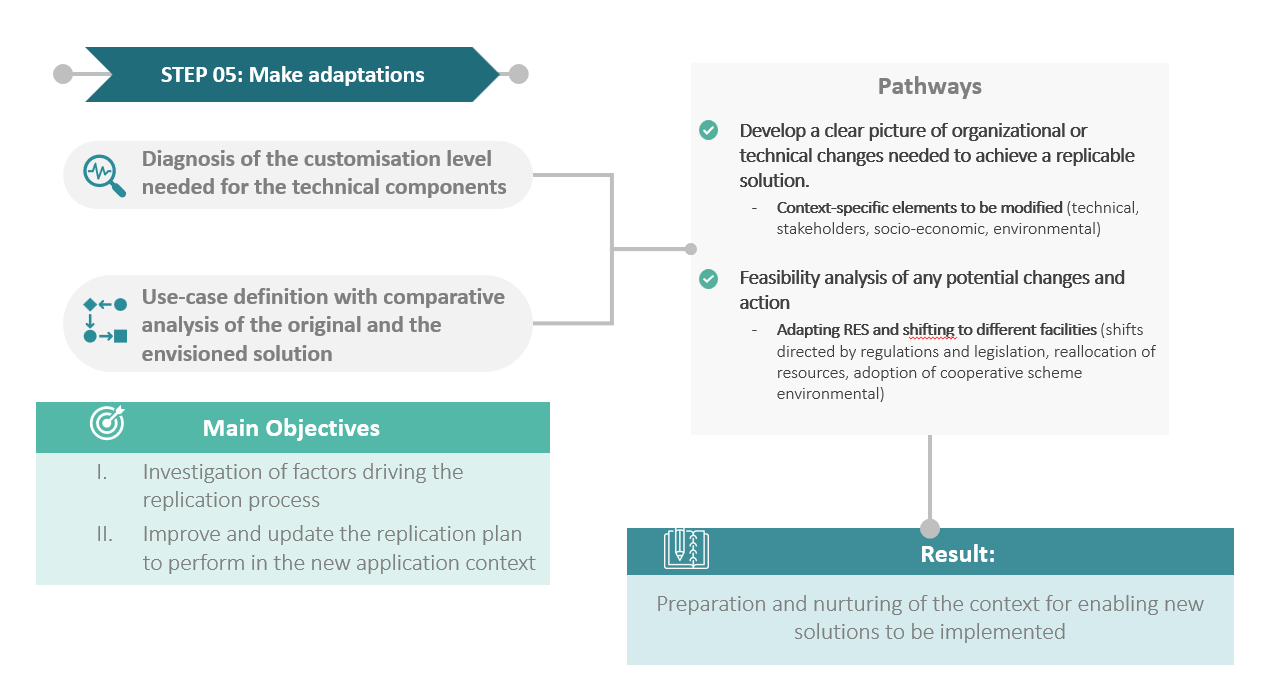Make adaptations

The diagnosis of the customisation level needed for the technical components
The ability to make adaptations reflects the innate accurate understanding while implementing a project. This can be achieved with concise description of the problem to be solved and careful parameterization in order to account each detail or component that may affect the outcome both qualitatively and quantitatively. ‘The diagnosis of the customisation level needed for the technical components’ is crucial because it provides a holistic ‘guideline’ of how a component is integrated and interacts in a greater context of such a project like ROBINSON. Every replication case shall provide information for various demands depending either on each specific technical component per RES item/facility, or for the whole project. Replicating ROBINSON is a mixture of technical, energy, socio-economic and environmental aspects, so the investigation and implementation of the technical components should take in account technical/energy-efficient decisions and cost-efficient solutions at the same time. Selecting these components may be slightly or highly differentiated among different cases but nonetheless, this differentiation shall be countable, decision-driven and efficiently designed in order to adopt adaptations.
Use-case definition with comparative analysis of the original and the envisioned solution’
Adaptations that may need to be done cover a broad context that will possibly require radical changes to the original characteristics of the actors that intent to adopt the ROBINSON project. ‘Use-case definition with comparative analysis of the original and the envisioned solution’ will provide the tools to convince the actors for the feasibility of any possible actions and changes to be made. Adapting to RES and shifting to different facilities from the existing ones will be easier if examining different scenaria and comparing advantages and disadvantages. Possible changes may include shifts that are directed by regulations and legislation, there is a possible change in the co-operative scheme which will adopt the ROBINSON concept and, finally, reallocating resources to invest in RES facilities must be sufficiently documented in order to convince and commit all the possible stakeholders.
Result
In this step the importance to ‘Make adaptations’ is highlighted. Implementing a project like ROBINSON, which aims to address various aspects, requires sufficient description of the required customisation level so that comparison case-studies may be performed. Consequently, a dynamic planning and managerial tool is realised, based on the very nature of ROBINSON project -adapting towards attaining desired state-of-the-art solutions of RES implementation. If properly developed and applied, adaptations to be made may also provide feedback for determining the future bottom-line for ‘reinventing’ the ROBINSON replication concept itself.
